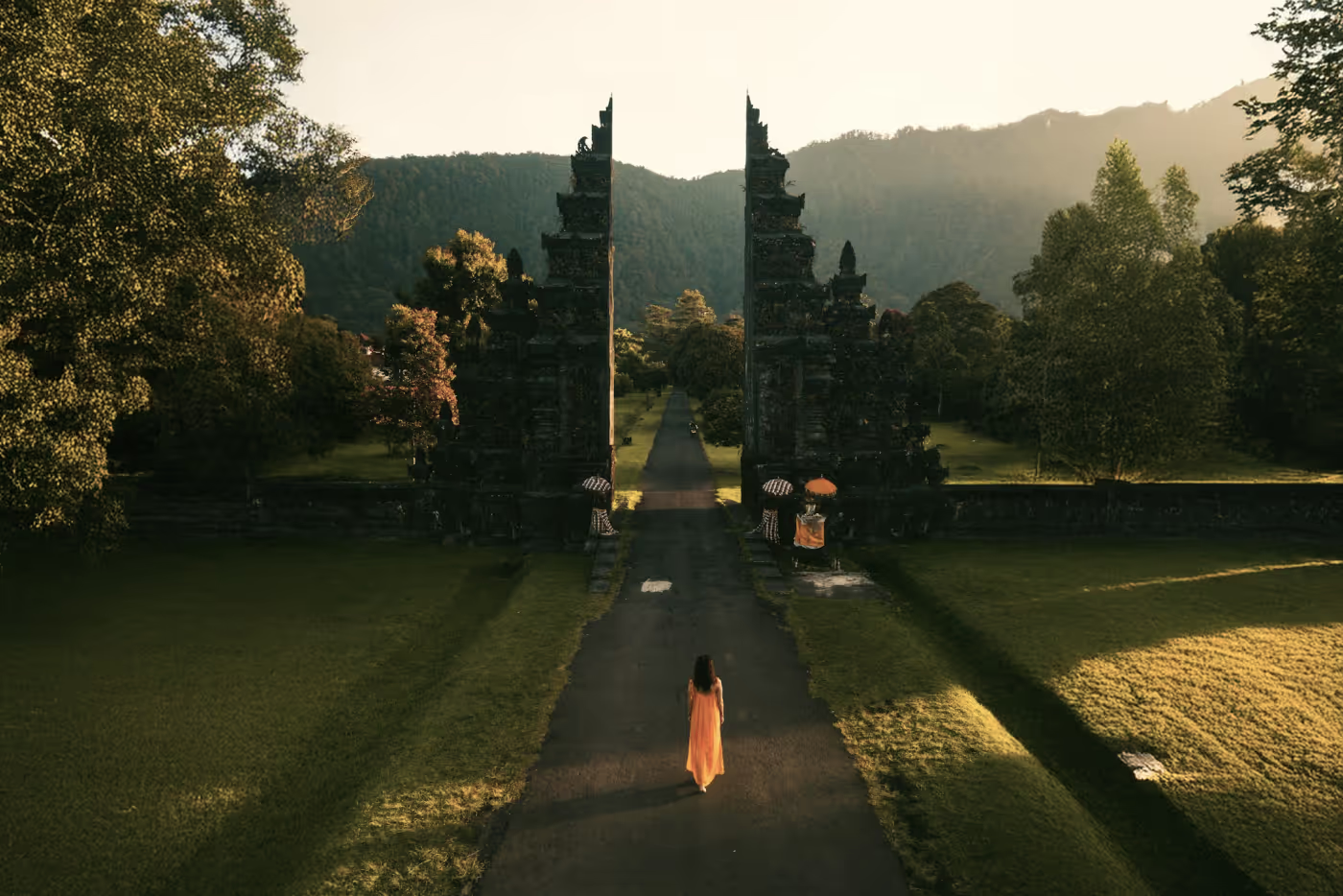While the island of Gods has long occupied a hallowed position on travel bucket lists, 2025 marks a pivotal moment in Bali's evolution. Having weathered the tourism fluctuations of recent years, the island has emerged more nuanced and deliberate in its offerings. Beyond the Instagram hotspots and digital nomad cafés lies a Bali recalibrating its relationship with visitors—one that balances development with preservation, luxury with authenticity, and tradition with innovation. As neighboring Southeast Asian destinations grow increasingly homogenized, Bali continues to reveal surprising depth to those willing to look beyond its familiar façade.
The Architectural Renaissance
Bali is experiencing an unprecedented architectural bloom, where contemporary design sensibilities meet indigenous building traditions. Leading this movement is the newly opened Bukit Vista Uluwatu, a cliffside property where traditional Balinese proportions have been reimagined through a modernist lens. Designed by acclaimed architect Alexis Dornier, the property's cantilevered pavilions and infinity pools dramatically frame the Indian Ocean rather than competing with it.
In Ubud, Bisma Eight continues to evolve with its newly unveiled forest suites—minimal concrete structures that appear to float within the jungle canopy. Their Japanese-influenced interiors feature cedar soaking tubs and handcrafted furnishings that demonstrate Bali's elevated craftsmanship.
Most groundbreaking is Potato Head Studios in Seminyak, where OMA's revolutionary design reimagines the beachfront resort as a cultural campus. Its floating ring structure houses both accommodations and public spaces dedicated to sustainable design innovation, establishing Bali as an unexpected nexus for architectural pilgrimage.
The Culinary Maturation
Bali's dining landscape has transcended its green-bowl café era into something far more sophisticated and regionally authentic. The island's new culinary movement is best exemplified by chef Wayan Kresna Yasa, whose restaurant Hujan Locale in Ubud applies fine-dining techniques to heritage recipes, creating dishes that honor indigenous ingredients while introducing unexpected textures and presentations.
In Canggu, Shelley's has pioneered a new culinary direction with its wood-fired cooking that transforms Balinese staples through subtle smoke infusion and fermentation techniques. Their banana-leaf wrapped fish, aged in-house and slowly charred over coconut husks, exemplifies this meticulous approach to flavor development.
The island's most anticipated 2025 opening is Locavore Next, the expansion of the groundbreaking zero-waste restaurant that has quietly revolutionized Indonesian fine dining. Their new location incorporates an experimental fermentation lab and agricultural research facility that positions Bali at the forefront of Southeast Asia's sustainable gastronomy movement.
The Cultural Revitalization
As tourism evolves, Bali has begun reclaiming and recontextualizing its cultural traditions beyond performative displays for visitors. Leading this movement is the Kamasan Art Collective in East Bali, where a younger generation of artists is reinterpreting traditional narrative painting techniques to address contemporary environmental and social issues.
The previously overlooked region around Sidemen has emerged as the epicenter of textile preservation, with the Threads of Life Cultural Center opening a comprehensive facility where visitors can observe master weavers creating ceremonial cloths using techniques that predate written history. Their residency program, which pairs international textile artists with local craftspeople, has sparked new creative dialogues.
In the sacred village of Tegallalang, the newly established Bali Center for Traditional Performance offers unprecedented access to sacred dance forms previously restricted to temple ceremonies. Rather than abbreviated tourist performances, their program involves comprehensive workshops led by distinguished performers who contextualize movements within Bali's complex spiritual cosmology.
The Sustainable Regeneration
Bali's environmental challenges have catalyzed remarkable regenerative initiatives that travelers can now meaningfully engage with. The pioneering Bambu Indah in Ubud has expanded its permaculture landscape to include educational facilities where visitors participate in river restoration projects and traditional irrigation practices that support Bali's UNESCO-recognized subak system.
On the east coast, marine conservation has taken center stage with the opening of Griya Santrian Bio-Reserve, where coral restoration and mangrove rehabilitation programs offer guests hands-on involvement in ecosystem regeneration rather than passive observation.
Most ambitious is the new Green School Retreat near Tabanan, an extension of the revolutionary educational campus where visitors can attend workshops on bamboo construction, regenerative agriculture, and zero-waste systems—transforming ecological education into an immersive travel experience that extends long after departure.
The Wilderness Rediscovery
While southern Bali continues its urban evolution, the island's less-explored regions offer increasingly sophisticated access to extraordinary natural landscapes. The northeastern volcanic region has become more accessible with the opening of Amankila Forest Pavilions, a collection of minimal structures positioned along the slopes of Mount Agung that serve as base camps for exploring black sand beaches and ancient water temples without sacrificing comfort.
In West Bali National Park, the newly established Plataran Menjangan Retreat provides unprecedented access to the island's most biodiverse ecosystem through conservation-focused wildlife observations and guided wilderness immersions led by indigenous trackers and environmental scientists.
Perhaps most remarkable is the reimagining of Bali's central highlands through properties like Munduk Moding Plantation, where cloud forest cottages situated within a working coffee estate offer a profound alternative to coastal experiences. Their new canopy walkways and guided nocturnal expeditions reveal a Bali that remains gloriously wild, defying the island's well-worn reputation for overexposure.








